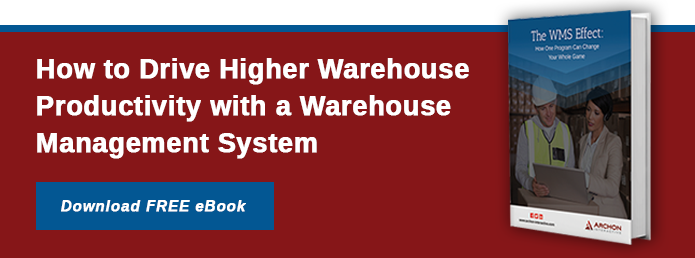 Making an informed investment in a Warehouse Management System (WMS) requires a clear view of what you expect to gain from the new software. The return on investment for your WMS can come in many forms, not just financial. When assessing the success of your implementation, it is important to keep this in mind, looking at the big picture rather than just the financial factors to determine whether or not the software has delivered as expected.
Making an informed investment in a Warehouse Management System (WMS) requires a clear view of what you expect to gain from the new software. The return on investment for your WMS can come in many forms, not just financial. When assessing the success of your implementation, it is important to keep this in mind, looking at the big picture rather than just the financial factors to determine whether or not the software has delivered as expected.
Defining Success
There are several areas where companies typically measure ROI for a Warehouse Management System. The obvious ones are inventory and labor, but it is also possible to measure the difference in customer satisfaction, reduction of waste, and general operating costs. Assigning a value to each of these metrics will determine whether or not your new WMS hits the mark.
Knowing What Things Cost
This part of your ROI assessment is really made up of two questions:
- How much did the WMS cost?
- How much would it cost not to have it?
There is an important distinction here. First of all, you need to know how much you invested in your Warehouse Management System—not just in the software and hardware, but also in training, implementation and maintenance. Then you need to consider what each day without it would cost as well. If your WMS brings you a 10% boost in operational efficiency, then you can calculate how much you would be losing by not having it.
Keeping Customers
One area of this formula that needs further expansion is the customer satisfaction aspect. Happy customers spend more and tend to come back for repeat business. How much does it cost to attract a brand new customer? A large part of your ROI may come in the form of customer retention. Assessing this based on the number of return customers you have and tracking the average spending of each transaction will help translate customer satisfaction into real value.
Inventory
Your Warehouse Management System may also surprise you with regard to inventory. In this case, ROI may come in a reduction in the value of the inventory that you have to maintain, but it can also come from benefits derived from better accuracy of your inventory. Even if your inventory levels remain largely unchanged with the WMS, you will reduce or eliminate out-of-stock issues and shrinkage as well as ensure that products don't get lost in your warehouse. This can provide a huge boost in ROI simply by increasing transparency.
Having the right Warehouse Management System offers plenty of opportunities for ROI. However, the way you measure ROI matters. You must start with a clear understanding of which metrics really contribute to your ROI and how the WMS directly impacts them. Remember to keep an open mind because the WMS may offer returns in areas that you failed to recognize at the outset or in areas that are not easily given a dollar value at the surface level.




